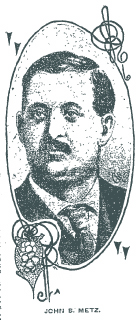May 27, 2007
Los Angeles
It is more than two weeks now since the graders came and removed the surface layer of the asphalt on Avenue 20, between Albion and Broadway, then went away without finishing their work. For all that time, the NO PARKING signs have hung on the telephone poles, and the regular parade of shortcutting commuters have bounced along on their unhappy shocks, as the street beneath them grew more uneven and dilapidated.
After a week, a flash of red edged by corroded silver was visible on Avenue 20 just before Broadway. A careful peek between passing cars revealed a long-buried light rail track, with a row of handsome, narrow brick placed alongside it.
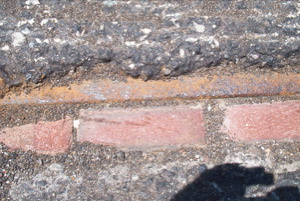
For this neglected area, just NE of downtown on the far side of the river, was once a thriving commercial and residential community, with trains running frequently down the middle of the streets.
Here is a map of the immediate vicinity, drawn in 1906. The yellow lines demark the Yellow Trains of the Los Angeles Railway Company, and just in the middle heading approximately north-south you’ll find the line that ran along Avenue 20, passing between Main Street and Downey, now known as Broadway. Behind the dead end at Main, the Los Angeles Brewing Company, now the Brewery Arts Complex. Avenues 21 and 22 are ghost streets, their rows of Victorian cottages bulldozed so the 5 can whisk folks away at speeds unimaginable in ’06. Mayden too is no more. And the red line along Daly is a Pacific Electric Railway Company train.
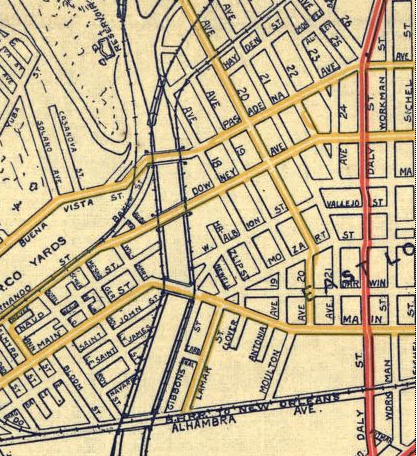
Back to the state of the very sad street. Well into the second week with the gravel laid bare to constant steamrolling by SUVs and minivans, new patches opened up closer to Albion Street. Viewed from behind the windshield, these had a strangely archaic quality that demanded further inquiry.
Here is the intersection, with the peculiar patch visible in situ. You can see how dangerous it is to get close to the quarry:
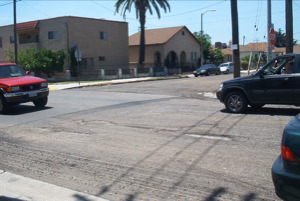
But your intrepid reporter would not be daunted in her quest to see if that was really what it appeared to be. Wait for it… wait and… wait and… dash out and take a snap!
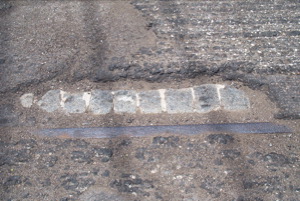
Aaaaahhh! Yes, those truly are cobblestones, that timeworn weapon of the disenfranchised European citizenry, laid alongside the old tracks in the heart of 21st Century Los Angeles. And somewhat haphazardly mortered, too. How extraordinary!
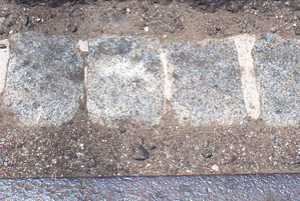
City of L.A., your street services suck, but I can’t really be angry that you scraped up my block and disappeared, because the sight of long-covered cobblestones have a peculiar calming effect on history geeks. So thanks a million for the cool experience. I’ll never look at the street the same way again. Now will you please get some guys over here to pave the freaking street?
your pal,
Kim




